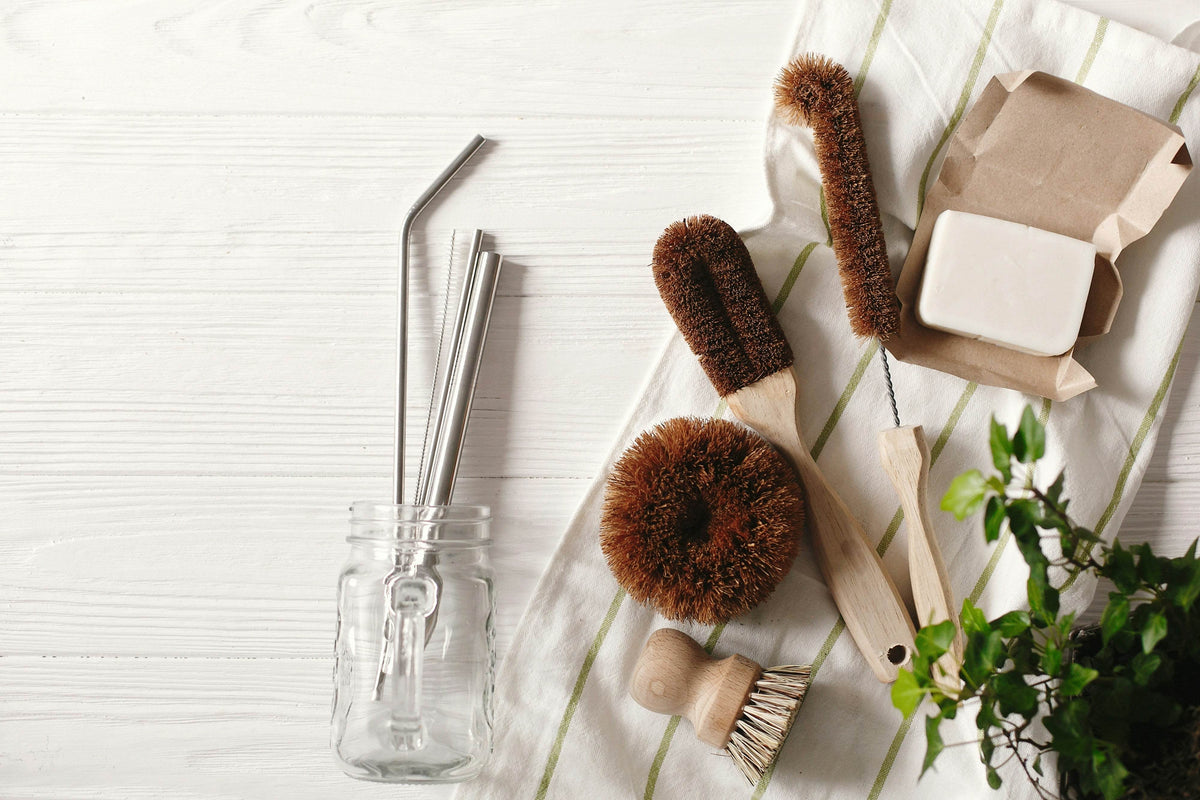
How Often Should You Change Your Brushes?
|
|
Time to read 6 min
|
|
Time to read 6 min
Replace household brushes regularly to ensure optimal hygiene and performance.
Different types of brushes have specific lifespans and signs of wear, requiring timely replacement to maintain effectiveness.
Emphasize eco-friendly disposal and repurposing of old brushes to minimize environmental impact.
Maintain brushes with regular cleaning, thorough drying, and appropriate storage to extend their usability.
Table of content
Each type of brush, depending on its use and material, has a different expected lifespan. Factors affecting their longevity include the frequency of use, the environment in which it is used, and the quality of the materials from which it is made.
Kitchen brushes see a lot of action—from scrubbing dishes to cleaning vegetables. Due to their frequent use and exposure to food particles and moisture, they can harbor bacteria and degrade faster than other brushes.
Bathroom brushes, used for cleaning toilets and showers, are exposed to harsh chemicals and bacteria. Proper care can extend their life, but regular replacement is necessary for maintaining cleanliness.
These are typically used for less intensive cleaning tasks like sweeping floors or dusting and therefore tend to have a longer usable life.
Interacting directly with your body, these brushes collect oils and shed hair, which requires them to be cleaned and replaced periodically.
Choosing eco-friendly brushes means not only purchasing brushes made from sustainable materials but also disposing of them responsibly when they're no longer usable.
The change in seasons can affect how and when you use certain brushes, potentially altering their lifespan.
Proper care can significantly extend the life of your brushes, reducing environmental waste and saving you money.
Before you dispose of your old brushes, consider whether they can be repurposed for less demanding tasks around the home.
By finding new purposes for old brushes, you not only reduce waste but also add a layer of resourcefulness to your household management. Each of these uses can give your old brushes a second life, combining practicality with sustainability.
Different brush materials require specific care to maximize their useful life.
Understanding when to replace your brushes is more than a matter of maintaining cleanliness—it's a crucial aspect of practicing sustainable living and ensuring that your home remains a healthy, pleasant environment. Regularly assessing and replacing them prevents the buildup of bacteria and wear that can compromise their effectiveness and hygiene.
At Best Brushes, we are committed not only to providing you with high-quality, eco-friendly products but also to helping you utilize them in the most effective and sustainable way possible. By following the replacement guidelines and maintenance tips provided, you can enhance their lifespan, reduce environmental waste, and save money in the long run. Furthermore, by adopting innovative practices for repurposing or responsibly disposing of your old brushes, you contribute positively to environmental conservation and promote a cycle of mindful consumption and waste reduction.
Embrace these practices wholeheartedly to make a significant impact on both the cleanliness of your living space and the health of our planet. We encourage you to keep exploring ways to extend the life of your household tools and find creative solutions for repurposing items that might otherwise be discarded. Together, through informed choices and sustainable practices, we can ensure that our daily routines contribute to a larger goal of environmental stewardship and a better future for all.
In conclusion, replacing your brushes at the right time is a simple yet profound step you can take today to support a sustainable tomorrow. Let Best Brushes guide you in making smart, eco-friendly decisions that uplift your lifestyle while caring for our world.
Your cart is currently empty
Shop now

